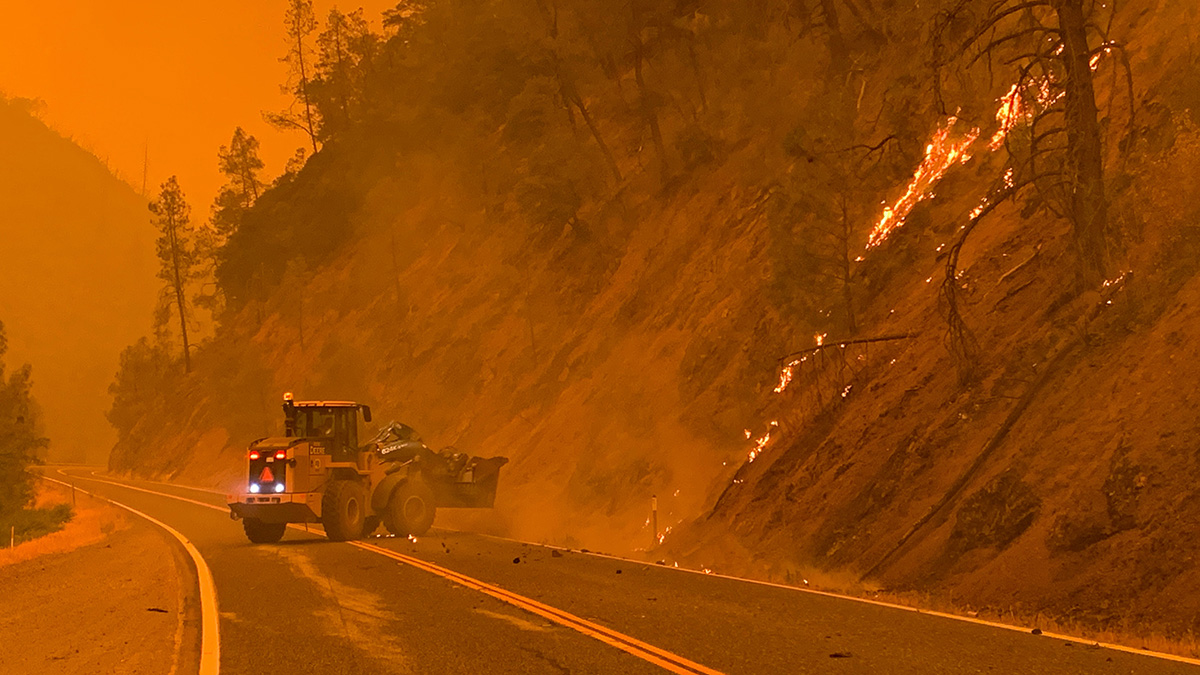Wildfire risk to forests across the United States is set to increase by a factor of 4, and tree mortality caused by other climate-induced factors like drought, heat, disease, and insects is set to at least double, new research shows.
“Forests in the western half of the U.S. have the highest vulnerability to each of these risks,” said William Anderegg, an associate professor at the University of Utah and lead author of the paper, which was published in Ecology Letters.
But risks are not confined to the West. There are wildfire risks in Florida and Georgia, as well as parts of Oklahoma and Texas, and insect and drought risks in the northern Great Lakes states.
Anderegg explained that researchers modeled burned areas depicted by satellite imagery and used forest inventory data to ascertain other climate risks like drought, heat, disease, and insect-driven tree mortality.
The paper provides insights for improving forest conservation practices and underscores an urgent need to reduce emissions to mitigate the impacts of climate change, Anderegg said. More specifically, it highlights design and assessment flaws in climate policies like forest carbon offsets. Anderegg and the other authors question the integrity of offset projects and call for “rigorous forest climate risk assessment” for policies and programs that rely on the potential of forests to store carbon.
Reworking Forest Offset Designs
The way that forest offset protocols account for risks like wildfire is buffer pools—unharvested woodlands set aside to compensate for carbon losses. But, Anderegg said, such buffer pools do not account for geographical heterogeneity, like wildfire risks in California being significantly higher than those in Maine, or the fact that risks like wildfire are likely set to increase owing to climate change.
Another technique the scientific community often suggests is controlled burning. But there’s a problem: Many of the forests, especially those in the West, are part of forest offset projects in California’s cap-and-trade program. What this means, in essence, is that owners and managers of these forests are incentivized not to burn because carbon credits are dependent on the amount of carbon these forests can hold.
“Not only are these [forest offset] protocols underestimating disturbance risk, but they’re potentially making that risk greater.”
Bodie Cabiyo, a graduate research fellow in the Energy and Resources Group at the University of California, Berkeley, noted that some of these forests have grown very dense and now have a lot of carbon in them. Cabiyo was not involved in the new research.
“What worries me about the offset protocols is that they incentivize dense forests, which are at higher risk of disturbance,” he said. Although management techniques like thinning can protect against future disturbances, the protocols effectively penalize such actions because they reduce carbon stocks. “So not only are these protocols underestimating disturbance risk, but they’re potentially making that risk greater,” Cabiyo added.
Expressing similar concerns, Barbara Haya, director of the Berkeley Carbon Trading Project, said the protocols are creating “a perverse incentive” for forest managers to not decrease carbon stock even when it is beneficial to do so. “The offset protocols are in direct contradiction with some work that’s being done in California to manage forests more sustainably to reduce fire risk,” she added.
Anderegg suggested that an investment framework that allowed for management like prescribed burns would work better for both forest conservation and carbon sequestration.
—Rishika Pardikar (@rishpardikar), Science Writer

